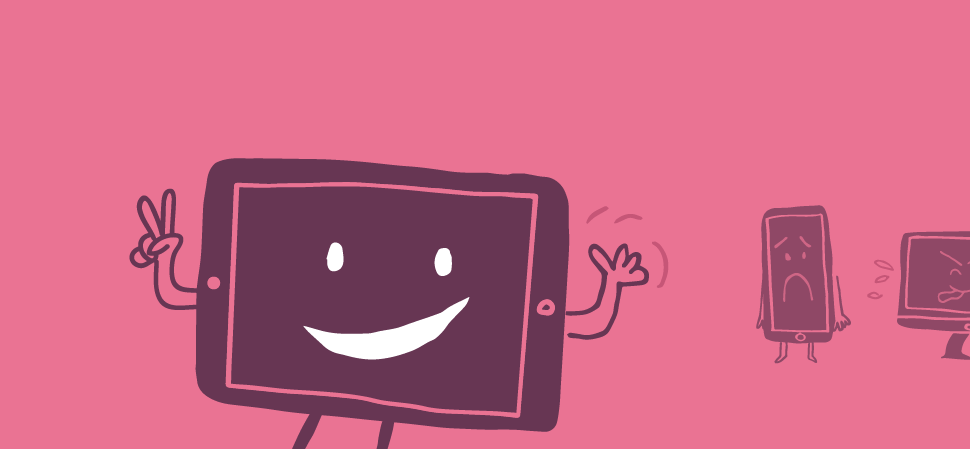If mobile is king outside, 7-inch and above tablets will be the perfect companion at home, and also the more convenient for online purchases.
Buying on your tablet is higher than on your smartphone
Only 20% of smartphone owners have bought online from their phone, against 59% of tablet users. Furthermore, the average basket is 54% higher from a tablet, which is used at home in a more appropriate environment for buying.
In the US, the m-commerce was estimated at 13B$ against 24B$ for the tablet in 2013. In 2016, these numbers should rise to 26B$ for smartphones and 61B$ for tablets.
French people are more and more equipped with tablets
Nowadays, 15% of French people own a tablet and 39% own a smartphone. According to Gartner, tablet’s sales should overtake those of computers by 2015. However, the touch direction of Windows 8 could impact the computer manufacturers that offer more and more hybrid products (big touch screens).
The convenience of a bigger computer screen would disappear in favour of a faster ignition and a more comfortable position, that will prevent pulling the power unit cable or your thighs from getting too warm. This trend gets confirmed with hardware manufacturers who offer more and more hybrid solutions (PC with physical and touch keyboard or tablet). Windows 10 will keep the touch environment. It’s time to develop high definition screens and offer more touch interactions.
When should you think Tablet First to sell a product or service?
If the ultimate goal is to sell a product or service, it would be wiser to design an experience on tablet that will be more appropriate for purchasing, and to think of the mobile only as a marketing contact point. Mobile would be used to give a concise presentation of the offer as users don’t read as much on this device. If the user spends more time on his tablet, it’s also an opportunity to create a richer brand universe with the inclusion of video for instance (which takes longer to load on mobile).
A development towards cross-media?
The tablet that people used when watching TV has now become the privileged centre of attention. We are expecting the home digital environment to evolve in this direction.
The tablet could allow content control and the broadcast on different screens, but could also enhance audiovisual content or create specific content for this bigger screen. It is easy to think of a TV ad becoming interactive on the tablet.
For instance, eBay is developing a tablet service on which one can look up the products seen on TV in real time. Amazon also offers complementary information (second screen) by recognizing the TV sound, which is a revolution for teletext. Microsoft Smartglass offers enhanced content for entertainment and video games (displaying game maps for example).
To go further : US mobile commerce trends sur visual.ly

